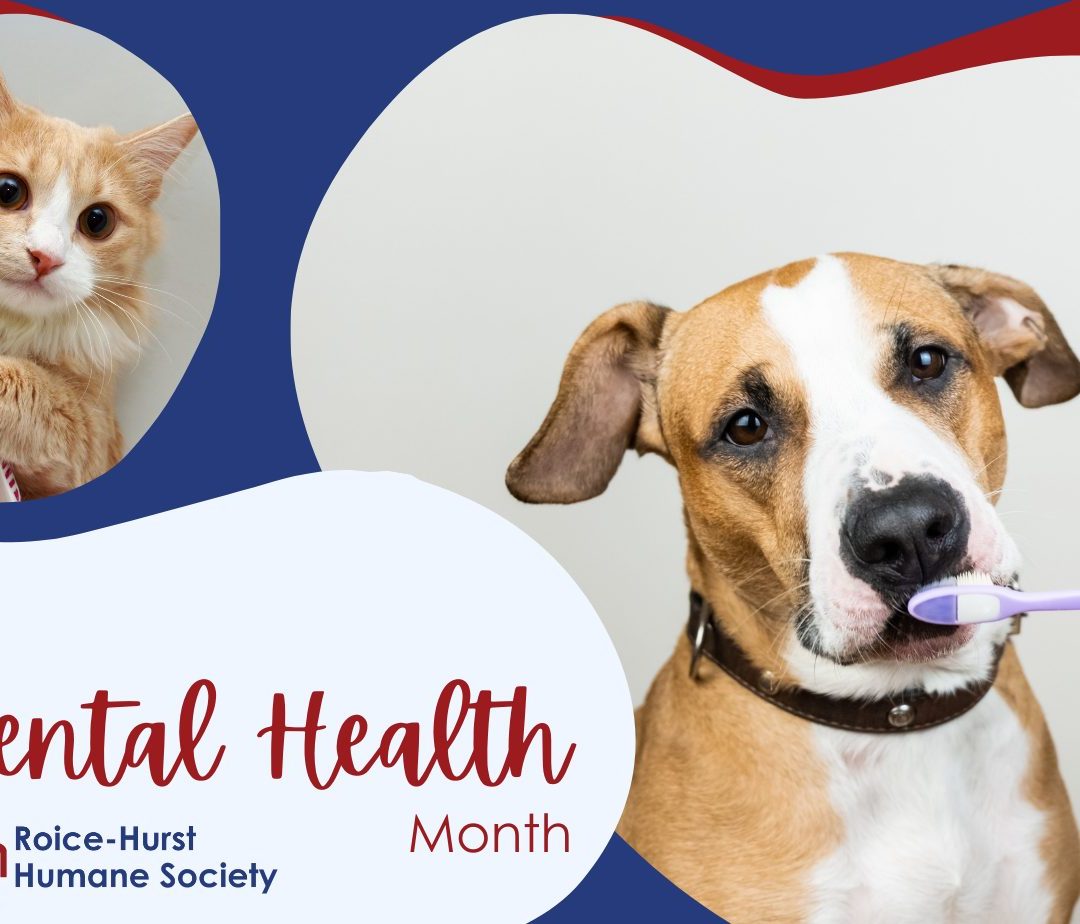One important aspect of pet care that is often overlooked by pet parents is adding dental care to their pet’s daily schedule. While it might be tempting to think that pets don’t need to brush their teeth twice a day like a human would, brushing your pet’s teeth daily actually plays an important role in overall health. The American Veterinary Dental Society estimates 80% of dogs and 70% of cats will develop some form of dental disease by the young age of three years. National Pet Dental Health month is celebrated every February to help promote the importance of keeping your pet’s mouth healthy, happy, and squeaky clean! Brushing your dog or cat’s teeth might sound like a daunting or unusual task, but here are just a few ideas to help get you started on your journey to better dental health for your furry friend!
- Introduce brushing: It is usually easier to start brushing your dog or cat’s teeth at a young age, but it is never too late for your pet to learn. If your pet is older or has a dirty mouth, it is best to get a dental cleaning done by your vet before beginning to brush. Brushing a pet’s teeth when he already has plaque and tartar buildup can actually push the bacteria into his bloodstream through the gums, increasing the risk of damage and illness to his other organs. Having a professional cleaning done will get you started on the right track and will contribute to your pet’s health. Always use a toothbrush and toothpaste that is specifically designed for your pet — not human toothpaste! Human toothpaste contains ingredients that should not be ingested by your pet, whereas pet toothpastes are designed to be safe to swallow. Start slow and gradually introduce your pet to the toothbrush and toothpaste. When brushing your pet’s teeth, try to keep the experience fun and rewarding so they will come to enjoy, or at least tolerate, getting their teeth cleaned. When first introducing brushing, start by letting your pet sniff the toothbrush and lick a little toothpaste off the brush, rewarding your pet when they interact with the toothbrush. Keep brushings quick and gentle, especially for the first few months. Take care not to scrub hard and gradually work your way from the front teeth to the back as your pet becomes more comfortable with brushing. It’s also best to let your pet keep their mouth closed and gently lift their lips when accessing their teeth as most pets do not enjoy having their mouths forced open. It will take time for your pet to adjust to having his teeth brushed, so don’t get discouraged if you feel like you aren’t making quick progress. Be consistent, patient, reward your pet, and don’t be afraid to talk to your vet if you need help getting started. Can’t do it every day? Try starting off with 3 times per week!
- Offer treats or toys that encourage safe chewing habits: Unless your pet will not allow brushing, dental chews and toys should complement regular brushing rather than replace it. With both chew toys and dental treats, supervising your pet while they chew is the best way to ensure they are safely using the treat or toy. You’ll also want to check that the toy or treat is an appropriate size for your pet as most toys and treats are designed for different sized pets based on their weight and chewing habits. When using chew toys, many pets will try to eat small pieces of the toy they are able to chew off, so always discard any heavily used or damaged toys to keep your pet safe from ingesting things they shouldn’t. And as with all treats, too much of a good thing can lead to upset tummies. It is always a great idea to talk with your vet about selecting dental chews and toys for your pet as they will be able to point you in the right direction based on your pet’s specific needs. It might be tempting to throw your dog a bone or hard toy that they aren’t able to easily chew, but that can actually cause your pet’s teeth to wear down too quickly and even break. Your vet will be able to suggest treats, toys, and even special dental diets based on the current condition of your pet’s mouth and what will be most beneficial for their long term dental health goals.
- Schedule regular dental appointments for your pet: Preventative care at home is a great way to set your pet up for success when it comes to good dental health, but that doesn’t mean you should wait until problems arise to see a vet. Yearly dental exams will enable your vet to detect problems when they begin to arise rather than waiting until the issue is more severe and causing pain or illness. A healthy, happy mouth leads to a healthier, happier pet!

